Community Heritage

What measures are taken to protect and preserve heritage sites for future generations ?
Heritage sites are invaluable treasures that provide insight into the history, culture, and traditions of a community or civilization. It is essential to protect and preserve these sites for future generations to appreciate and learn from. Here are some measures taken to safeguard heritage sites: 1. Legislation and Policies 2. Conservation and Restoration 3. Community Involvement and Education 4. Research and Documentation 5. Security Measures 6. Sustainable Tourism Practices

What are the benefits of visiting heritage sites ?
Visiting heritage sites offers a plethora of benefits that extend beyond mere sightseeing. These sites, often recognized for their cultural, historical, or natural significance, provide a unique opportunity to connect with the past and learn about different cultures and environments. Here are some of the key advantages of exploring these treasures: ### 1. **Educational Opportunities** Heritage sites serve as open-air classrooms where visitors can gain firsthand knowledge about history, architecture, art, and nature. They offer a tangible connection to the past, allowing people to understand how societies have evolved over time. #### Key Takeaways: - **Historical Context**: Learn about significant events and periods by visiting the actual locations where they occurred. - **Cultural Insights**: Understand the customs, traditions, and way of life of different civilizations. - **Environmental Learning**: Natural heritage sites teach about ecosystems, biodiversity, and geological formations. ### 2. **Cultural Preservation** By visiting these sites, travelers contribute to the preservation of cultural heritage. The revenue generated from tourism can be used to maintain and protect these places for future generations. #### Importance: - **Support Conservation**: Financial support through visitor fees aids in restoration and maintenance projects. - **Raise Awareness**: Increase public consciousness about the importance of preserving our shared heritage. ### 3. **Economic Benefits** Heritage tourism boosts local economies by creating jobs, supporting small businesses, and promoting regional development. #### Economic Impact: - **Job Creation**: From site management to hospitality services, heritage sites create employment opportunities. - **Local Businesses**: Local artisans, guides, and restaurants benefit from increased visitor traffic. ### 4. **Personal Enrichment** Exploring heritage sites can be a profoundly enriching experience that broadens one's perspectives and fosters appreciation for different cultures and histories. #### Personal Growth: - **Broadened Horizons**: Understand diverse ways of life and appreciate the beauty of cultural diversity. - **Reflection and Inspiration**: Reflect on human achievements and find inspiration in the creativity and resilience of past societies. ### 5. **Entertainment and Leisure** Beyond educational and cultural benefits, visiting heritage sites is also an enjoyable leisure activity that allows individuals and families to spend quality time together while engaging in a meaningful activity. #### Fun Facts: - **Family-Friendly**: Many sites offer activities and tours tailored for families, making them great for vacations. - **Photography**: Heritage sites often provide stunning visual experiences and photo opportunities. ### 6. **Sustainable Tourism** Many heritage sites are part of sustainable tourism initiatives that aim to minimize environmental impact and ensure the long-term preservation of cultural and natural resources. #### Sustainability Efforts: - **Low-Impact Activities**: Encourage walking, cycling, or using public transport to reduce carbon footprints. - **Eco-friendly Practices**: Some sites implement green practices like recycling, water conservation, and waste reduction.
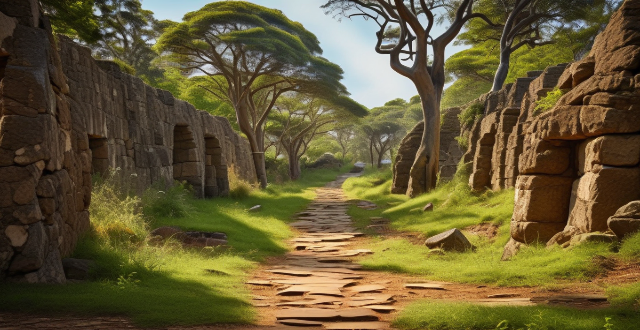
How can I make the most of my visit to a heritage site ?
Heritage sites are places that have cultural, historical, or natural significance. To make the most of your visit to a heritage site, you need to plan ahead, be prepared, and engage with the site in meaningful ways. This guide explores tips and strategies for preparation, on-site experience, and post-visit reflection. By following these tips, you can have a meaningful and enriching experience that enhances your understanding and appreciation of the heritage site.
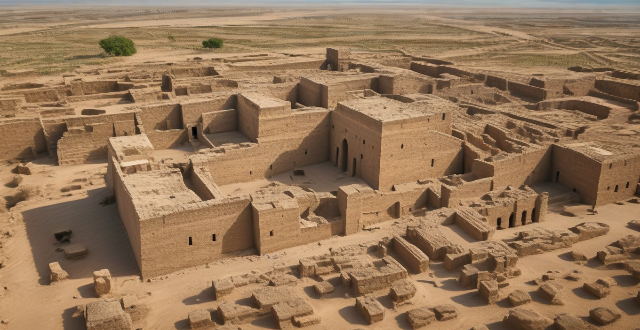
Can you recommend a heritage site that is off the beaten path ?
Qal'at al-Bahrain is a lesser-known heritage site located in Bahrain. It was once a thriving port city during the Dilmun period and played a significant role in ancient trade routes. The site has revealed numerous artifacts and structures that provide insights into the ancient civilization of Dilmun, including burial mounds, fortification walls, a dhow harbor, and a temple complex. Visiting Qal'at al-Bahrain offers several advantages over more popular heritage sites, such as fewer crowds, unique history, cultural experience, and scenic beauty.

How does tourism impact local communities around heritage sites ?
Tourism has become an essential part of the global economy, and its impact on local communities around heritage sites is significant. The following sections will discuss the positive and negative effects of tourism on these communities. ## Positive Effects ### Economic Benefits 1. **Job Creation**: Tourism creates job opportunities for locals, such as tour guides, hotel staff, and restaurant workers. 2. **Income Generation**: Tourists spend money on local products and services, which boosts the economy. 3. **Infrastructure Development**: Improved roads, transportation systems, and communication networks are often developed to accommodate tourists. ### Cultural Preservation 1. **Heritage Conservation**: Tourism revenue can be used to preserve and maintain heritage sites. 2. **Cultural Exchange**: Interaction with tourists promotes cultural exchange and understanding. 3. **Traditional Arts and Crafts**: Tourists often purchase traditional arts and crafts, encouraging their preservation and promotion. ### Environmental Awareness 1. **Eco-Tourism**: Some tourists are interested in eco-friendly activities, promoting sustainable tourism practices. 2. **Conservation Efforts**: Tourism revenue can fund environmental conservation projects near heritage sites. ## Negative Effects ### Environmental Degradation 1. **Overcrowding**: Large numbers of tourists can lead to overcrowding and damage to fragile ecosystems. 2. **Pollution**: Increased traffic and waste production can contribute to pollution issues. 3. **Resource Depletion**: Overuse of resources like water and energy can strain local supplies. ### Cultural Disruption 1. **Commercialization**: The focus on tourism can lead to the commercialization of cultural experiences, diluting their authenticity. 2. **Loss of Traditions**: As locals adapt to tourist demands, some traditions may be lost or altered. 3. **Cultural Sensitivity Issues**: Tourists may not always respect local customs and practices, leading to tensions. ### Economic Disparities 1. **Leakage of Revenue**: Not all tourism revenue stays within the local community, especially if managed by external corporations. 2. **Unequal Distribution**: Benefits from tourism may not be evenly distributed among all members of the community. 3. **Dependency on Tourism**: Over-reliance on tourism can make local economies vulnerable to fluctuations in tourist numbers. ## Conclusion The impact of tourism on local communities around heritage sites is complex, with both positive and negative aspects. It is crucial for stakeholders to manage tourism responsibly to maximize benefits while minimizing harm to the environment, culture, and economy of these communities. By fostering sustainable tourism practices, we can ensure that future generations can also enjoy these valuable heritage sites and the unique cultures they represent.

How do you ensure sustainable tourism at heritage sites ?
To ensure sustainable tourism at heritage sites, it isTo ensure sustainable tourism at heritage sites, it is local communities about the importance of it is crucial to educate visitors and local communities about the importance of conservation, manage visitor impact through carrying capacity studies and timed entry systems, promote responsible tourism practices like sustainable transportation and waste management, support local economies by hiring local staff and promoting local products, collaborate with governments and organizations for funding and partnerships, regularly monitor and evaluate site conditions and management effectiveness, and preserve cultural integrity by offering authentic experiences and training staff in cultural sensitivity.
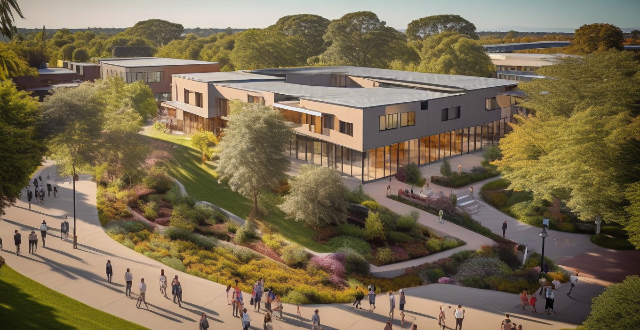
How can immigrants effectively integrate into a new community ?
Effective integration of immigrants into a new community involves learning the local language, engaging with the community, embracing cultural differences, building a support network, seeking out resources, and being patient and persistent. These strategies can help immigrants communicate effectively, find employment opportunities, understand the culture, make friends, and navigate the legal processes involved in immigration.

How can I learn more about the history and culture of a heritage site before visiting ?
This text offers detailed steps on how to enrich your knowledge before visiting heritage sites. It suggests reading books and articles, utilizing online resources, listening to podcasts and audio tours, visiting museum exhibits, connecting with local contacts, and accessing academic papers and research. The goal is to appreciate the site's historical context and cultural significance, making the visit more meaningful.

How can cultural fusion be promoted within multicultural communities ?
Promoting Cultural Fusion in Multicultural Communities emphasizes the importance of understanding and valuing diversity, fostering dialogue and exchange, promoting inclusion and equity, supporting cultural preservation and innovation, implementing policies and practices, and building partnerships and collaborations. These strategies aim to create a community where diverse cultures are celebrated and respected, leading to a richer and more innovative community life.

How can we involve community members in climate adaptation planning ?
Community engagement is crucial for successful climate adaptation planning. To involve community members, identify and engage stakeholders, develop a stakeholder engagement plan, use multiple channels of communication, involve community members in decision making, provide training and education, foster partnerships and collaboration, and monitor and evaluate progress. By doing so, you can create a more resilient community that is better prepared for the impacts of climate change.

How does sports contribute to community development ?
Sports play a vital role in community development by promoting physical health, fostering social interaction and unity, contributing to economic growth, and providing educational opportunities and personal development. Participating in sports can prevent chronic diseases, strengthen bones and muscles, and boost the immune system while also improving fitness levels. Sports events provide opportunities for teamwork, cultural exchange, and increased tourism, leading to job creation and revenue generation. Additionally, sports offer educational opportunities for skill development and personal growth, contributing to the overall well-being of community members.

What is the best time of year to visit heritage sites ?
The best time to visit heritage sites is often during the shoulder seasons of spring and autumn, offering mild weather, fewer crowds, and vibrant flora. Spring brings blooming gardens and natural landscapes while autumn showcases fall foliage. Summer, though peak tourist season with longer daylight hours, can be hotter and more crowded. Winter provides a unique atmosphere with holiday events but requires proper clothing for cold weather. Shoulder seasons and weekdays generally offer less crowded experiences, and local events can enrich visits. Budget-wise, off-peak travel can save on costs. Ultimately, the ideal time depends on individual preferences for weather, crowds, and budget.

How can we measure the effectiveness of community climate adaptation efforts ?
Measuring the effectiveness of community climate adaptation efforts is crucial for understanding their impact on resilience to climate change. Key steps include setting clear objectives, developing relevant indicators, collecting and analyzing data, transparent reporting, evaluating success, iterative improvement, community engagement, and policy alignment. By following these steps, communities can ensure their adaptation efforts are effective and continuously improved.
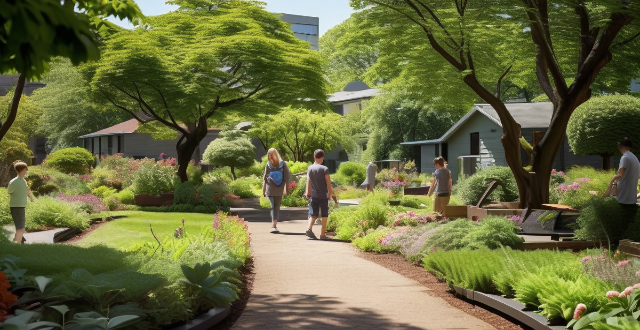
What role do community gardens play in city greening efforts ?
Community gardens play a significant role in city greening efforts by providing environmental, social, economic, and urban planning benefits. These gardens improve air quality, enhance biodiversity, and promote soil health. They also foster community building, offer educational opportunities, and contribute to health promotion. Economically, community gardens provide food security and create job opportunities. Integrated into urban planning, they beautify cities and promote sustainable development. Overall, community gardens are vital for ecological health and improving residents' quality of life.

How do sports events promote social interaction and community building ?
Sports events play a significant role in promoting social interaction and community building. They bring people together, foster a sense of belonging, and create opportunities for individuals to connect with one another. This is achieved through encouraging participation, building community spirit, providing entertainment and recreation, facilitating networking opportunities, and enhancing diversity and inclusion. By bringing people together around a shared passion for sports, these events create lasting connections and positive experiences that extend far beyond the playing field.
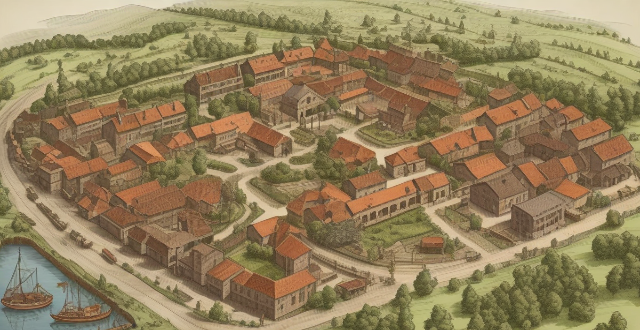
Which South American cities are known for their rich cultural heritage ?
South America boasts several cities known for their rich cultural heritage, including Rio de Janeiro with its Carnival celebrations and Sugarloaf Mountain, Buenos Aires as the birthplace of tango and home to the Colon Theater, Lima's historic center and culinary scene, Quito's well-preserved colonial architecture and local markets, Cusco and Machu Picchu's Incan ruins and Andean culture, and Santiago's bohemian Bellavista neighborhood and thriving arts scene.

In what ways do women's empowerment initiatives contribute to community development ?
Women's empowerment initiatives are crucial for community development as they address gender inequalities and foster inclusivity. These initiatives benefit not only women but also have a positive ripple effect on the broader community, leading to more sustainable and equitable growth. Economic growth is achieved through increased participation in the workforce, entrepreneurship and innovation, and improved household economics. Social development is promoted through health and well-being, education, and gender equality. Political empowerment is enhanced through increased participation in decision-making and promotion of good governance. Environmental sustainability is ensured through resource management and climate action. Cultural preservation and exchange are enriched through artistic expression and cultural exchange. Women's empowerment initiatives are essential for comprehensive community development, addressing gender inequalities, promoting inclusivity, and paving the way for sustainable growth, social cohesion, and a brighter future for all members of the community.

How do sports initiatives support community health and wellbeing in cities ?
Sports initiatives in cities are crucial for promoting physical activity, social interaction, mental health, and overall quality of life. The collaboration between the International Olympic Committee and PATH is a prime example of how these initiatives can make a significant impact on community health. By increasing access to health-enhancing community sport activities, sports initiatives support physical activity, enhance social interaction, improve mental health, raise awareness about health issues, and contribute to economic impact and urban development. These initiatives are valuable investments for city planners and policymakers as they promote community health and wellbeing in urban areas.
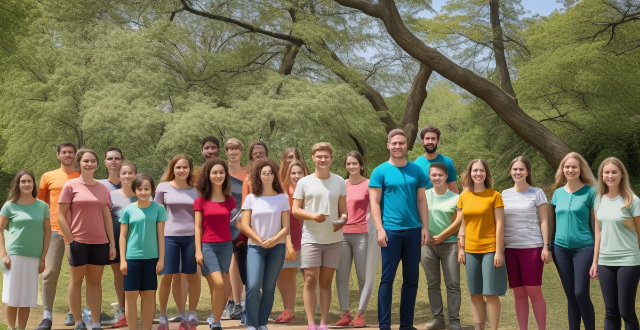
What are some successful examples of sports-based community development initiatives ?
Sports-based community development initiatives have been successful in various parts of the world, bringing people together and fostering a sense of community. Some notable examples include Sport for Social Impact, Right to Play, Sport and Recreation Victoria, and Sport England. These organizations use sports to tackle social challenges such as poverty, gender inequality, lack of education, and physical inactivity. Their programs range from soccer games promoting peace in Israel and Palestine to after-school programs teaching life skills in areas affected by war, poverty, and disease. These examples demonstrate the power of sports-based community development initiatives to bring people together, promote health and well-being, and address social challenges.

How can we raise awareness about the importance of community climate adaptation ?
To raise awareness about the importance of community climate adaptation, several strategies can be employed: 1. **Education and Outreach Programs**: Conduct workshops, engage schools, collaborate with media outlets, and develop informational materials to educate people about climate change and its implications. 2. **Community Engagement Initiatives**: Encourage public participation in discussions, foster partnerships with local organizations, and promote civic leadership to drive climate adaptation efforts. 3. **Visual Aids and Creative Approaches**: Use art, performances, exhibits, infographics, and other creative means to communicate the importance of climate resilience. 4. **Online Platforms and Social Media**: Leverage digital tools like social media campaigns, online forums, virtual reality experiences, and interactive apps to reach a wider audience. 5. **Policy Advocacy and Support**: Advocate for favorable policies, provide financial incentives, and support legislation that enhances community resilience against climate change.

What role do sports organizations play in fostering community engagement and participation ?
The text discusses the role of sports organizations in fostering community engagement and participation. It highlights their contributions in various areas including community building, educational outreach, economic impact, and social responsibility. Sports organizations promote social interaction by offering memberships, organizing events, and providing volunteer opportunities. They enhance diversity and inclusion through inclusive policies, adaptive sports programs, and cultural celebrations. In terms of educational outreach, they promote health and wellness through fitness programs, workshops, and school collaborations. They also develop life skills such as leadership, character development, and career opportunities. Sports organizations stimulate local economies by hosting tournaments and events, promoting sports tourism, and creating jobs. They support local businesses through partnership programs, community marketplaces, and merchandise sales. Additionally, sports organizations demonstrate social responsibility by adopting green initiatives, planning eco-friendly events, launching educational campaigns, organizing fundraising events, having athlete ambassadors, and offering matching gift programs. Overall, sports organizations play a crucial role in building social connections, enhancing diversity and inclusion, providing educational outreach, stimulating local economies, and embracing social responsibility.

Can sports be used as a tool for social change and community development ?
This text discusses the potential of sports as a tool for social change and community development. It highlights how sports can break down barriers, promote health and well-being, and contribute to education and personal development. The article also explores how sports can address social issues, empower communities economically, and promote peace and reconciliation. However, it emphasizes the need for equitable resource allocation, accessibility, and sustainability to fully realize the potential of sports in societal transformation.

What are the top heritage sites to visit in your country ?
China is home to many heritage sites that are worth visiting. Here are the top ones: 1. Great Wall of China - A series of fortifications built along an east-to-west line across the historical northern borders of China. 2. Forbidden City - A palace complex in the heart of Beijing, home to 24 emperors from the Ming and Qing dynasties. 3. Potala Palace - A palace complex in Lhasa, Tibet Autonomous Region, that served as the residence of the Dalai Lamas until 1959. 4. Terracotta Army - A collection of terracotta sculptures depicting the armies of Qin Shi Huang, the first Emperor of China. 5. Li River and Karst Mountains - Located in Guilin, Guangxi Zhuang Autonomous Region, known for its stunning natural beauty characterized by crystal-clear rivers and towering limestone peaks.

What role do sports clubs and community centers play in promoting public health initiatives ?
Sports clubs and community centers significantly contribute to public health efforts by offering programs and services that encourage physical activity, provide educational opportunities, build social support networks, target specific demographics, and collaborate with health organizations. These establishments play a crucial role in promoting healthier lifestyles through their facilities, workshops, group activities, youth and senior programs, and partnerships with hospitals and awareness campaigns. By catering to diverse age groups and interests, sports clubs and community centers help foster a culture of health and wellness within communities.
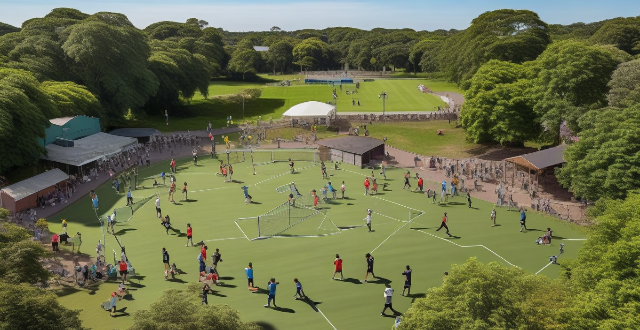
What impact does sports have on the social cohesion and community spirit in rural areas ?
The article discusses the impact of sports on social cohesion and community spirit in rural areas. Sports bring people together, promote teamwork, and create a sense of belonging that can strengthen the fabric of a community. The article explores how sports build social capital by forming friendships and encouraging civic engagement. It also highlights how sports promote teamwork and cooperation by teaching communication skills and collaboration towards a common goal. Finally, the article emphasizes how sports create a sense of belonging within a community by supporting local teams and participating in community events. Overall, sports have a significant impact on rural communities and contribute to their overall well-being.

How can I gauge the level of parental involvement and community support at a school ?
Gauging the level of parental involvement and community support at a school is crucial for parents when choosing an educational institution for their child. This can significantly impact a student's academic performance and overall development. To gauge these factors, parents can observe school events, talk to other parents, and research the school's reputation. When observing school events, parents should attend open houses, sports games/concerts, and volunteer opportunities to assess the turnout and engagement of parents during these events. A high turnout and active participation suggest strong parental involvement and community support. Parents can also connect with other parents through social media groups, PTA meetings, school drop-off/pick-up times, and school events to ask about their experiences regarding parental involvement and community support at the school. Asking about their level of involvement, supportiveness of the school, communication channels, and impact on student performance can provide valuable insights. Researching the school's reputation online through reviews, rankings, news articles, social media, forums, and message boards can also help gauge parental involvement and community support. Analyzing historical data such as enrollment trends, fundraising results, alumni success rates, and school surveys/feedback can further indicate the level of these factors over time. In conclusion, gauging the level of parental involvement and community support at a school involves attending school events, talking to other parents, and researching the school's reputation. By doing so, parents can make informed decisions about choosing the right school for their child that fosters a supportive and engaging environment conducive to academic success and overall development.

How can sports clubs and teams collaborate with local authorities to support community development projects ?
This topic discusses how sports clubs and teams can collaborate with local authorities to contribute to community development projects. It outlines steps such as understanding the local landscape, building partnerships, implementing projects, and evaluating impact. The text emphasizes the importance of mutually beneficial initiatives and clear communication channels between stakeholders. It also provides examples of project implementation, such as youth mentorship programs and community clean-up days. Finally, it stresses the need for continuous evaluation and improvement to ensure effective use of resources and ongoing community benefit.

How can individuals contribute to the safe management of hazardous chemicals in their community ?
The article outlines various ways individuals can contribute to the safe management of hazardous chemicals in their community. It emphasizes the importance of education, staying informed, taking action, prevention and preparedness, and community collaboration. Individuals are encouraged to research common hazardous chemicals, identify potential health effects, monitor local news, attend public meetings, report leaks and spills, support strict regulations, participate in cleanup efforts, implement safe practices at home, create an emergency plan, build partnerships, and encourage transparency. By taking these steps, individuals can play a crucial role in ensuring the safe management of hazardous chemicals within their communities.

How can we build climate resilience in our communities ?
Climate resilience is essential for community sustainability and well-being. Building it involves education, sustainable infrastructure, ecosystem conservation, economic strategies, community engagement, and research. Efforts must be collective across all sectors to achieve a resilient and sustainable future.

How can sports contribute to rural revitalization ?
Sports have the potential to significantly contribute to rural revitalization by enhancing community engagement, promoting health and wellness, and stimulating economic growth. Here are some ways in which sports can play a crucial role: ## Community Building and Engagement ### **Boosting Morale and Unity** - **Festivities and Events:** Sporting events often become festive occasions where people from different backgrounds come together to support their local teams. This fosters a sense of community and belonging. - **Common Goals:** The pursuit of victory in sports creates a shared objective that unites residents and encourages collective effort and pride. ### **Youth Development** - **Skills and Discipline:** Participation in sports teaches young people valuable life skills such as discipline, teamwork, and leadership. - **Positive Outlets:** Sports provide youth with constructive activities, keeping them away from idleness and potential negative influences. ### **Social Inclusion** - **Breaking Down Barriers:** Sports can help to break down social barriers, integrating marginalized groups into the wider community. - **Intergenerational Activities:** Sports can involve people of all ages, from children to the elderly, creating intergenerational connections. ## Health and Wellness Promotion ### **Physical Activity** - **Fitness and Health:** Engaging in sports improves physical fitness, reducing the risk of various health issues like obesity, heart disease, and diabetes. - **Mental Health:** Exercise releases endorphins, contributing to reduced stress levels and improved mental health. ### **Healthy Lifestyle Habits** - **Nutrition Awareness:** Athletes and those involved in sports often pay more attention to nutrition, inspiring others to follow suit. - **Preventive Care:** The emphasis on physical well-being through sports can lead to greater awareness of preventive healthcare measures. ## Economic Stimulation and Development ### **Tourism and Revenue** - **Sporting Events:** Attracting tournaments and competitions can bring tourists to rural areas, providing a significant boost to local businesses. - **Retail Opportunities:** Sports fans often purchase related merchandise, supporting local retailers and entrepreneurs. ### **Infrastructure Development** - **Facilities Construction:** Building sports facilities can create jobs during construction and provide long-term employment opportunities. - **Public Works:** Improved roads, parking lots, and other public works may be developed in conjunction with sports venues to serve both athletes and the general public. ### **Employment Generation** - **Coaching and Training:** As interest in sports grows, there will be increased demand for coaches, trainers, and other sports professionals. - **Support Services:** Hotels, restaurants, transportation services, and other businesses benefit from an increased need for support services during sporting events. ## Cultural Preservation and Identity ### **Traditional Sports** - **Cultural Heritage:** Some sports have deep cultural roots in rural communities and can be preserved and promoted as part of local heritage. - **Community Pride:** Successful local teams or athletes can become symbols of community pride and identity. ### **Educational Programs** - **School Curricula:** Incorporating sports programs into schools not only benefits students physically but also educationally by teaching them about their cultural history through sports. - **Community Workshops:** Hosting workshops on traditional sports can engage the community and preserve intangible cultural heritage.